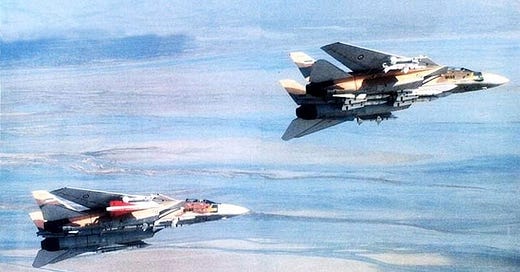On April 9, 1972, Iraq and the Soviet Union signed an historic agreement. The USSR committed to arming the Arab republic with the latest weaponry. In return for sending Baghdad guns, tanks and jet fighters, Moscow got just one thing—influence … in a region that held most of the world’s accessible oil.
In neighboring Iran, news of Iraq’s alliance with the Soviets exploded like a bomb. Ethnically Persian and predominately Shia, Iran was—and still is—a bitter rival of Iraq’s Sunni Arab establishment, which during the 1970s dominated the country’s politics.
In Tehran, King Mohammad Reza Shah Pahlavi—the “shah”—moved quickly to counter Baghdad’s move. First he set loose an army of secret police in a desperate and bloody bid to quell internal dissent. And then he reached out to the United States.
The shah wanted weapons. And not just any weapons. Himself a former military pilot, the king wanted the latest and best U.S.-made warplanes, with which the Iranian air force might dominate the Persian Gulf and even patrol as far away as the Indian Ocean.
The Iranian leader’s appetite for planes was notorious. “He’ll buy anything that flies,” one American official said of the shah. But Pahlavi was especially keen to acquire a fighter that could fly fast enough and shoot far enough to confront Soviet MiG-25 Foxbat recon planes that had been flying over Iran at 60,000 feet and Mach 3.
The administration of U.S. Pres. Richard Nixon was all too eager to grant the shah’s wish in exchange for Iran’s help balancing a rising Soviet Union. Nixon and his national security adviser Henry Kissinger visited Tehran in May 1972—and promptly offered the shah a “blank check.” Any weapons the king wanted and could pay for, he would get—regardless of the Pentagon’s own reservations and the State Department’s stringent export policies.
That’s how, starting in the mid-1970s, Iran became the only country besides the United States to operate arguably the most powerful interceptor jet ever built—the Grumman F-14 Tomcat, a swing-wing carrier fighter packing a sophisticated radar and long-range AIM-54 Phoenix air-to-air missiles.
Fifty years later on Monday, Israel—as part of its wider campaign targeting the Iranian regime, its air-defenses and nuclear weapons program and key Iranian industries—bombed at least two F-14s at an airport in Tehran.
They may have been grounded derelicts. At the very least, they were useful as sources of spare parts.
Just three squadrons share the air force’s pool of roughly four dozen surviving F-14s, only a dozen of which are usually active at any given time. As the Israeli air campaign widens, time many finally be up for the world’s last few operational Tomcats. (See video at top.)
Keep reading with a 7-day free trial
Subscribe to Trench Art to keep reading this post and get 7 days of free access to the full post archives.




